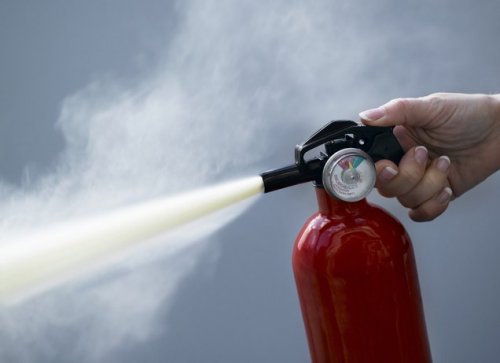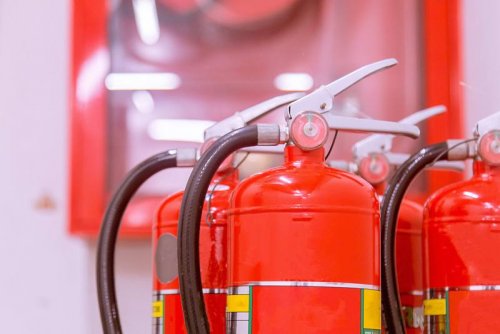Types of fire extinguishers and their correct use
The first thing they look for and use when discovering a fire source is, of course, a fire extinguisher. Thanks to the fire extinguisher, it becomes possible to, if not completely, at least partially eliminate the fire and slow down the spread of the fire even before the arrival of the firefighters.
That is why fire extinguishers, according to fire safety rules, should be located in every home, office, administrative building, in the trunk of every car, etc. Let's look at what types of fire extinguishers are used today and how to use them correctly.
The fire extinguisher as a device can be stationary or mobile. Its purpose is to extinguish small accidental fires.
The operation of this device is based on the principle of spraying the contents of a cylinder on a burning object or fire. The balloon is usually red, equipped with a tube or a special nozzle.
Inside the cylinder, the dispersed substance is always under pressure, and if you push the corresponding lever with your hand, it will suddenly begin to release to the outside.
Different types of fire extinguishers differ from each other depending on the class of fire to be eliminated by this fire extinguisher. Today there are only five types of fire extinguishers: liquid, powder, gas or carbon dioxide, air foam and air-emulsion.
Liquid fire extinguishers
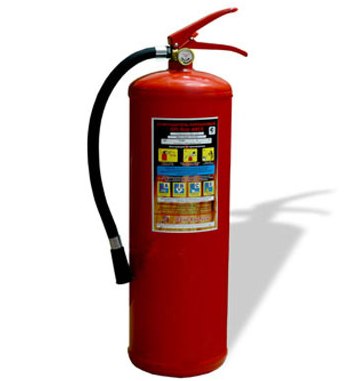
Fire extinguishers with water or liquid are intended for extinguishing fires of classes A and B. A — burning of solid substances, B — burning of liquid substances. Marking of the cylinder OV - water fire extinguisher.
Inside the balloon is water or a solution of chemically active substances in water. These extinguishers are not suitable for extinguishing fires of other classes. However, these fire extinguishers are the most environmentally friendly and harmless to human health, due to the presence in them of only natural ingredients.
Powder fire extinguishers
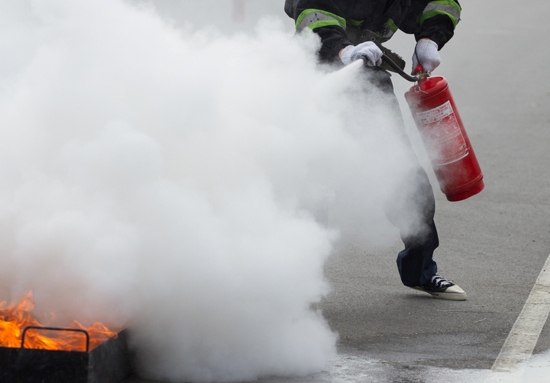
Powder fire extinguishers are universal, as they can be used to extinguish fires of almost any class: A, B, C and E. C — burning of gaseous substances, E — burning of objects under electrical voltage.
These fire extinguishers are marked "OP" - fire extinguisher for general use. Inside the balloon is a powdery substance that includes salts and additional components to keep the device always ready — in a charged state. The auxiliaries protect the powder base of the fire extinguisher from the formation of moisture and lumps.
Powder fire extinguishers are divided into: injection, gas-generating and self-acting.
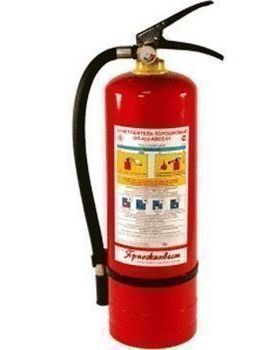
Injection fire extinguishers contain two main components: powder and an inert gas (carbon dioxide or nitrogen). Even air under pressure up to 16 atmospheres can be used as a gas.
Such a fire extinguisher can extinguish fires of classes A, B, C, E.There is a special pressure indicator inside the cylinder of the head of the injection fire extinguisher, according to the condition of which the operability of the device can be judged: if the scale is green, the fire extinguisher is ready for normal operation.
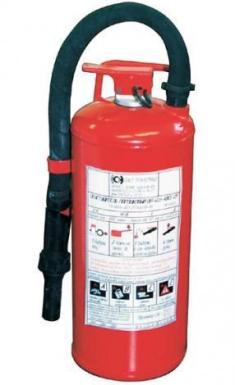
Gas generator (or gas) fire extinguishers with dry powder use for their work the energy that is generated directly in the extinguishing process. At this moment, gas comes out of the nozzle and a fire extinguishing substance is thrown out. The principle of starting gas generator fire extinguishers is the same as that of injection fire extinguishers, with the only difference that gas fire extinguishers have a waiting period of up to 10 seconds.
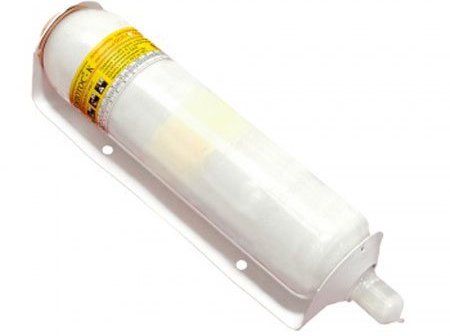
Self-contained fire extinguishers, as the name suggests, do not require direct human involvement in launching them. As a rule, these devices are part of the general fire extinguishing system and are activated by themselves depending on the ambient temperature. Often such devices can be found in the office, warehouse, garage, etc.
When the initiating device inside the fire extinguisher reaches a temperature of 100 (OSP-1) or 200 ° C (OSP-2), the bulb of the fire extinguisher explodes and sprays a dust cloud with a volume of up to 9 cubic meters. Such a fire extinguisher can also be used manually - simply break the flask at one end and direct the gas towards the fire.
Gas fire extinguishers
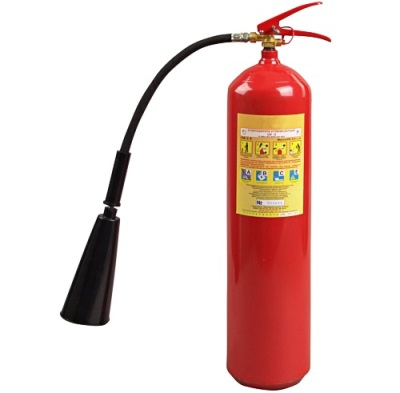
Carbon dioxide or gas fire extinguishers combine a wide group of devices. Their marking is "OU". Gas extinguishers include aerosol and carbon dioxide-bromoethyl devices.Previously, they included tetrachlorine fire extinguishers, toxic to humans: during extinguishing, a gas is formed that is dangerous to inhale, and it was possible to use such a fire extinguisher only while wearing a gas mask.
For more information on coal fire extinguishers see here: Carbon dioxide fire extinguisher - device, principle of operation, rules of use
Over the years, safe hand-held and mobile carbon dioxide fire extinguishers have appeared, the working substance of which is carbon dioxide. Carbon dioxide fire extinguishers are used to extinguish Class B and C fires; as a rule, they are effective when dust and water are powerless.
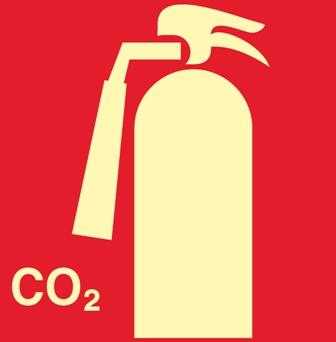
Aerosol and carbon dioxide-bromoethyl fire extinguishers contain halogenated hydrocarbons, which, when exposed to a flame, contribute to the formation of up to 18% oxygen, which contributes to extinguishing a fire with these compositions.
Gas extinguishers should not be used to extinguish objects with magnesium, sodium or aluminum surfaces, as these substances can burn without oxygen and the extinguishing agents of the extinguisher will not have the correct effect on them.
In addition, it is not safe to use a fire extinguisher to extinguish equipment with a high operating temperature, such as pipelines, because carbon dioxide has a cooling effect during the reaction, this can lead to dangerous temperature drops and leakage of the pipe.
Air foam fire extinguishers
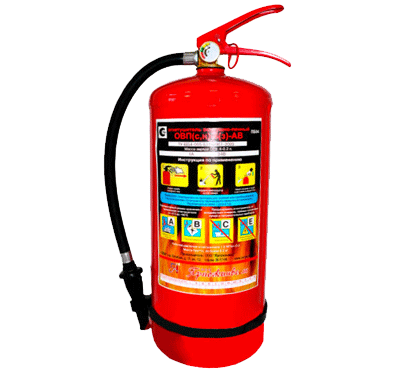
They resort to the use of fire extinguishers with air foam in cases where a material prone to long smoldering (coal, paper, wood, plastic) has caught fire.Oil-based liquids (paint, oil, oil) can also be extinguished with an air extinguisher. But equipment made of aluminum, sodium, potassium, magnesium and other alkaline earth metals cannot be extinguished with an air foam fire extinguisher. An air-foam fire extinguisher is also useless for extinguishing live installations.
An air-foam fire extinguisher is effective in cases where the fire must be quickly localized by creating a foam coating that will block the access of oxygen to the burning object.
Air emulsion fire extinguishers
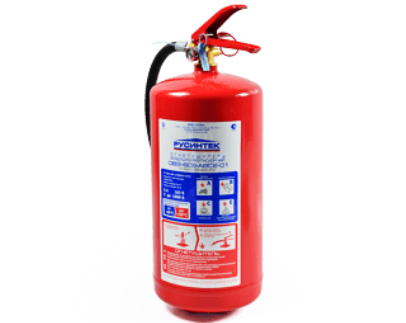
Air-emulsion fire extinguishers are designed for extinguishing fires of classes A, B and E. The energy of the compressed air is used to supply the fire-extinguishing emulsion to the flame. But such a fire extinguisher cannot extinguish gas, as well as alkaline earth metals, cotton and pyroxylin.
See also:The procedure for personnel in the event of a fire in an electrical installation

